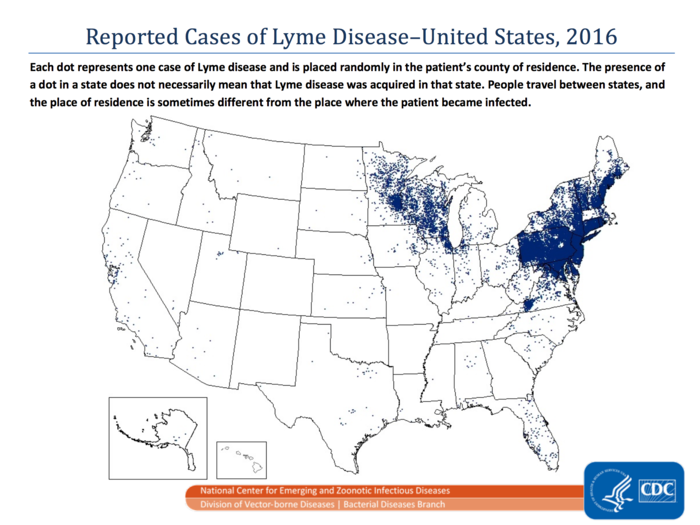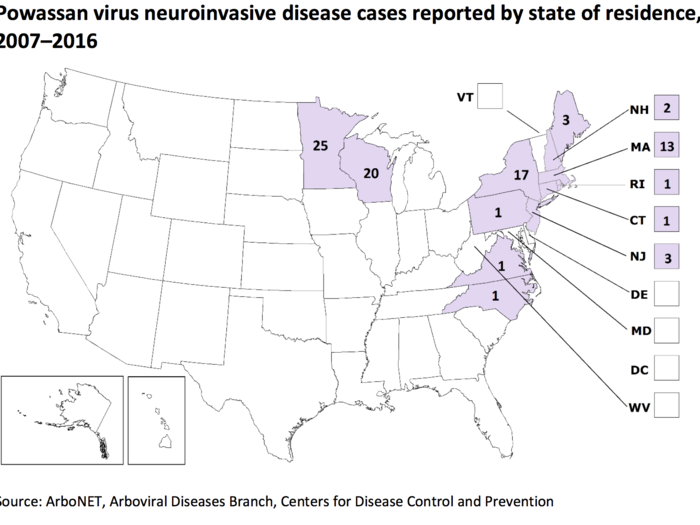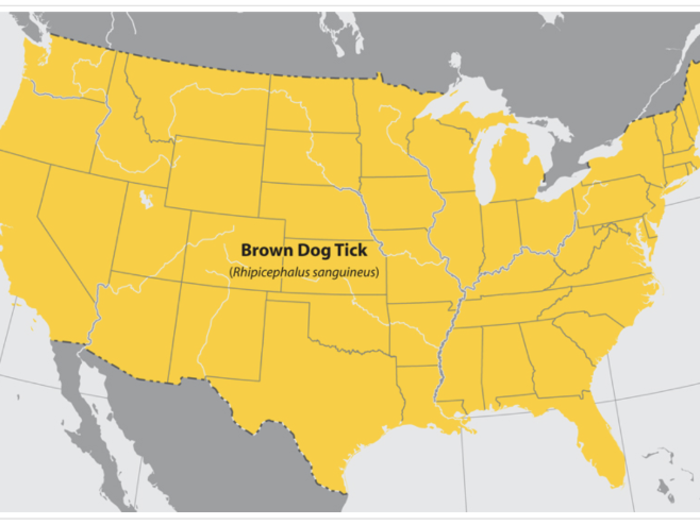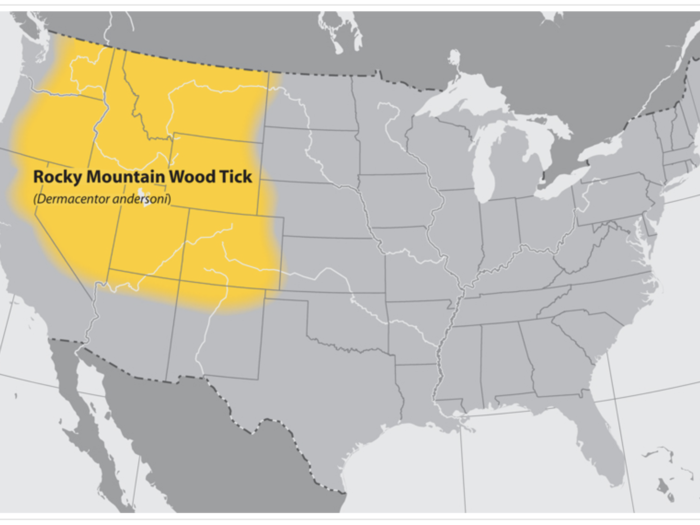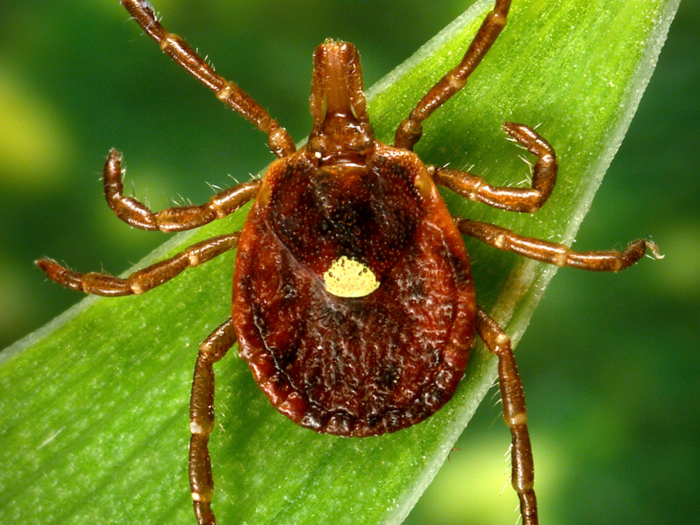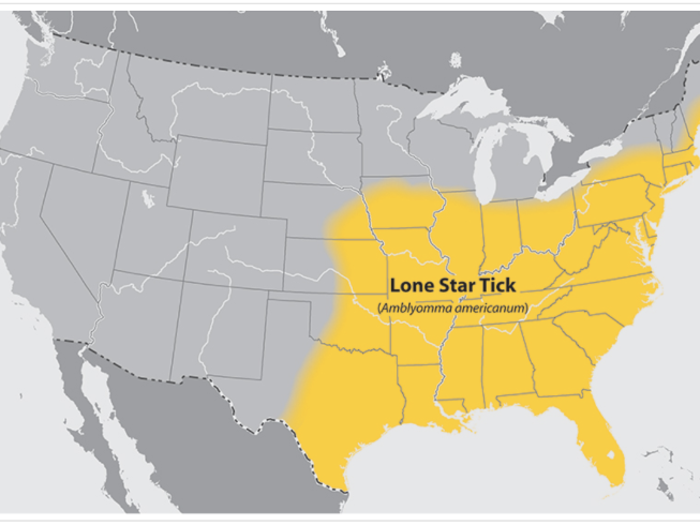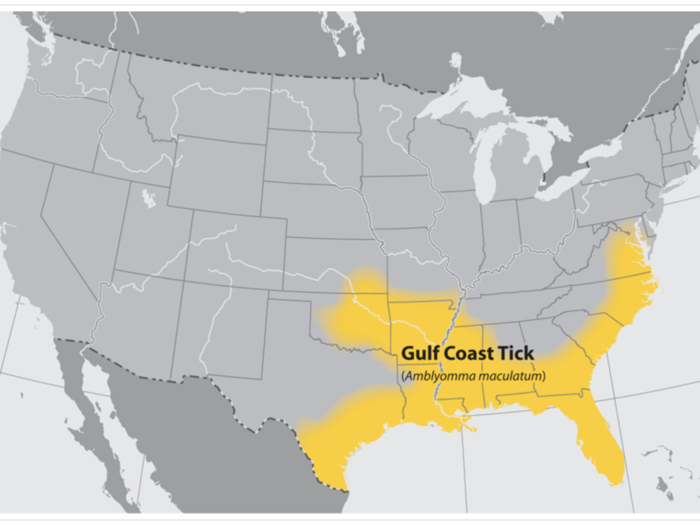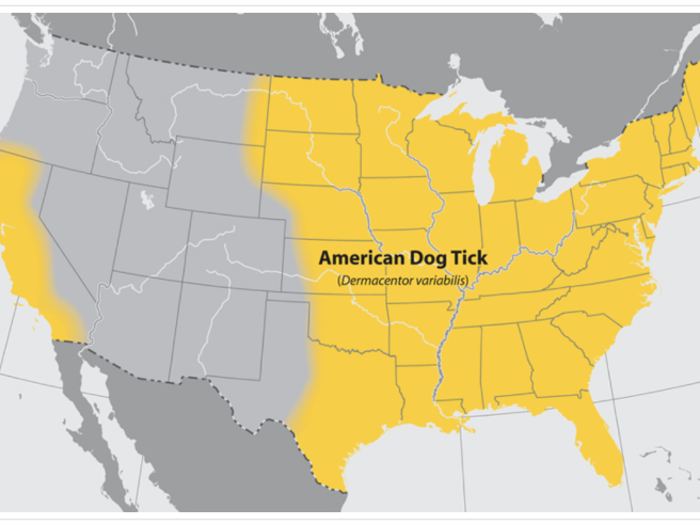The blacklegged tick in the photo at the top of this story is small, but the nymphs — which can spread these diseases — are even smaller, about the size of a poppyseed.
It can take a tick 24 hours to transmit Lyme disease, so removing these ticks as soon as possible is essential.
Powassan virus is far more rare, though infections are far more likely to cause neurological damage or death.
The brown dog tick can be found around the world.
These ticks are often found — unsurprisingly — on dogs. They can transmit Rocky Mountain spotted fever, which is fairly rare. The all-time high year for cases in the US was 2012, with 4,470 cases reported.
This illness can cause rash, headache, and neurological damage. If it's not treated, it can become life-threatening.
Adult Rocky Mountain Wood Ticks are most likely to transmit disease to humans.
Along with Rocky Mountain spotted fever, these ticks can cause the flu-like Colorado tick fever and can spread tularemia, a potentially life-threatening bacterial illness.
These ticks cause a number of different illnesses, including one little-understood one that's often referred to as an alpha-gal or red meat allergy.
This is an allergy to a sugar found in red meat and mammal products, including dairy. Bites from the ticks have been spreading the strange allergy, which also seems to increase the risk of heart disease.
Gulf Coast ticks spread another form of spotted fever.
While this illness isn't as serious as Rocky Mountain spotted fever, it can cause serious symptoms.
The American dog tick, also known as a wood tick, is larger than a blacklegged tick (as seen in the photo at the top of this story).
Like the rest of these ticks, they are most active when the weather is warm.


